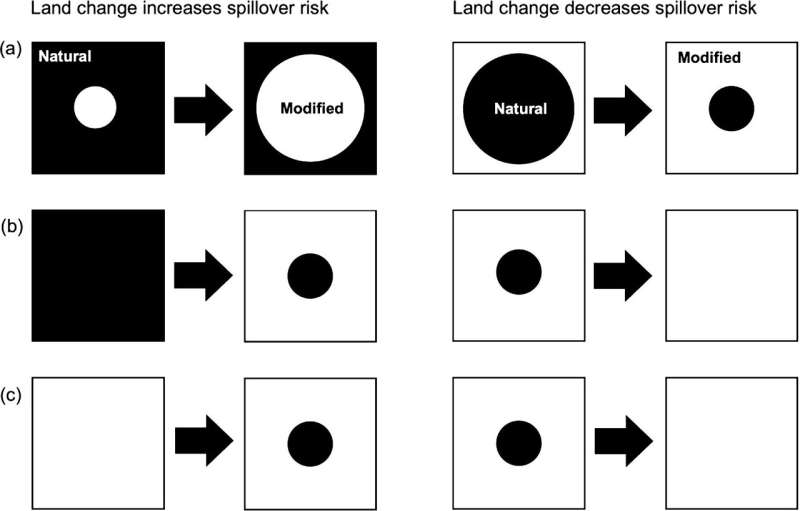Disease spillover risk poorly communicated, oversimplified during COVID-19 pandemic

COVID-19 has been the first pandemic that has taken place alongside the interconnectivity of the Internet. Consequently, the spread of ideas and information about the disease has been unprecedented—but not always accurate. One of the widely circulated headlines was that of the relationship between land change and the spillover of diseases from wildlife to humans.
Writing in BioScience, Andre D. Mader of the Institute for Global Environmental Strategies and colleagues survey primary and secondary literature, as well as webpage content on the subject of land change and zoonotic disease risk. Based on the patterns picked up from this literature and media coverage, Mader and colleagues describe what amounts to a case study in improper science communication and its possible consequences.
According to the authors, media messaging consistently described direct causality between zoonotic disease spread and land use change, despite the fact that only 53% of the surveyed peer-reviewed literature made this association. The authors delve into theoretical scenarios that would demonstrate the difficulty of tracing the real risk of zoonotic spillover, emphasizing that the "complexity of pathogen responses to land change cannot be reduced to one-size-fits-all proclamations."
The authors found that as the literature moves from primary research to review articles and commentaries, and finally to webpages, the "overstating of the evidence" increases, with 78% of secondary papers implying the land use–zoonotic spillover association and all but one of the sampled webpages making this association. The authors also noted that secondary sources and webpages often failed to mention the uncertainty associated with their conclusions.
The potential consequences of simplistic messaging and a lack of proper communication regarding zoonotic spillover can erode credibility, neglect local community's specific needs when it comes to policy making, and detract attention from other factors that can lead to zoonotic spillover, say Mader and colleagues. The authors recommend more accurate, nuanced, and explanatory dissemination of the studies on zoonotic spillover risk, arguing that such an approach would also benefit science more broadly.
As the authors conclude, "if the goal of science communication is to improve understanding, it must strike a balance: sufficient simplicity to be grasped by as broad an audience as possible but sufficient nuance to capture the complexity of an issue and contribute meaningfully to the discussion around it, especially when it goes viral."
More information: Andre Mader et al, Messaging should reflect the nuanced relationship between land change and zoonotic disease risk, BioScience (2022). DOI: 10.1093/biosci/biac075





















